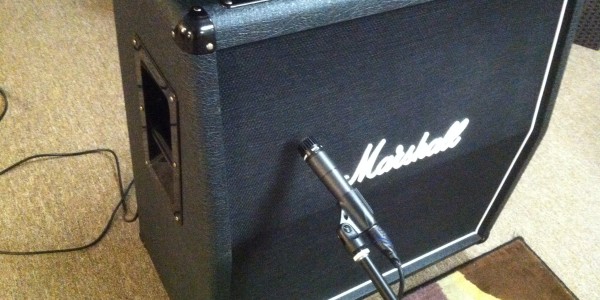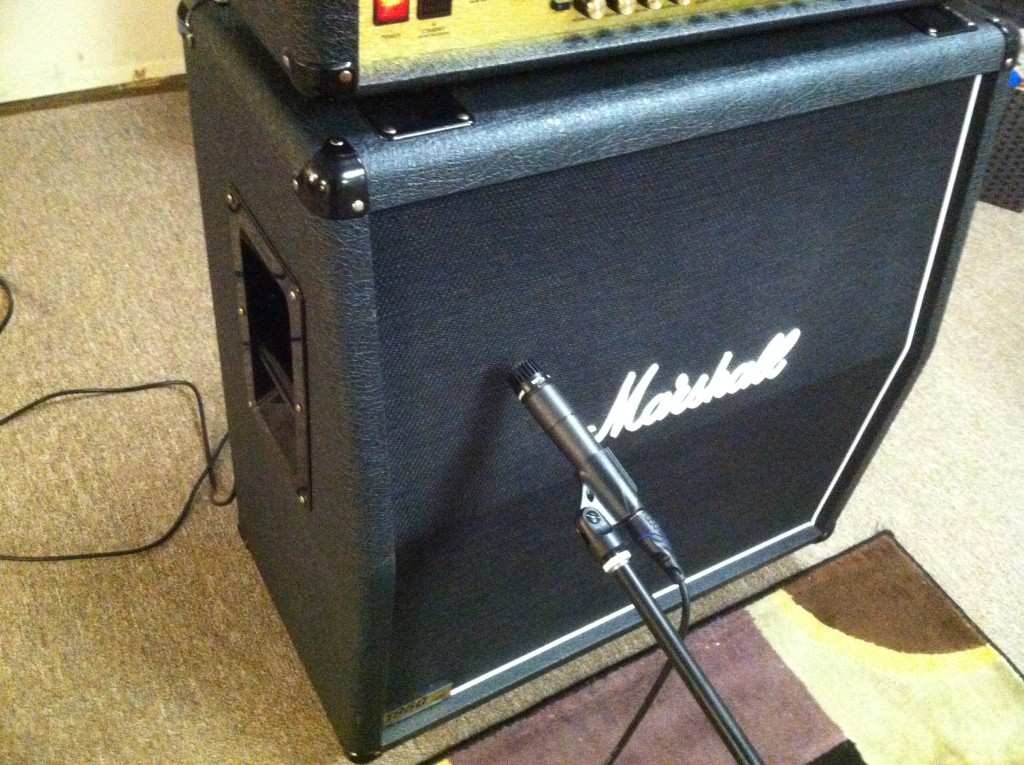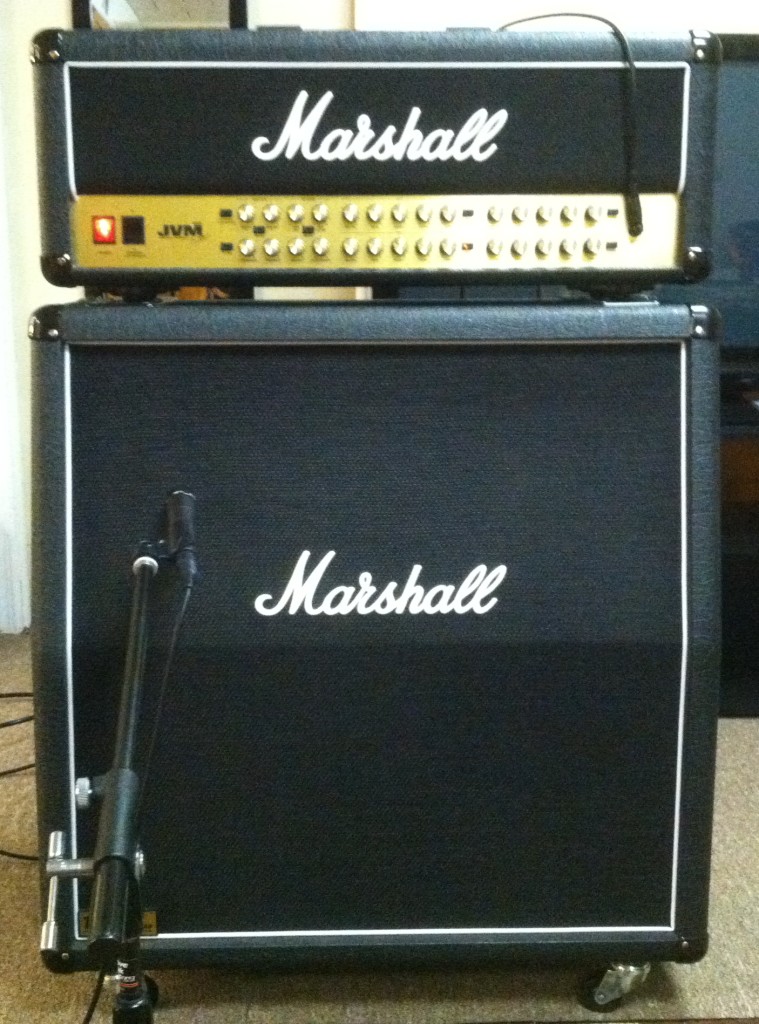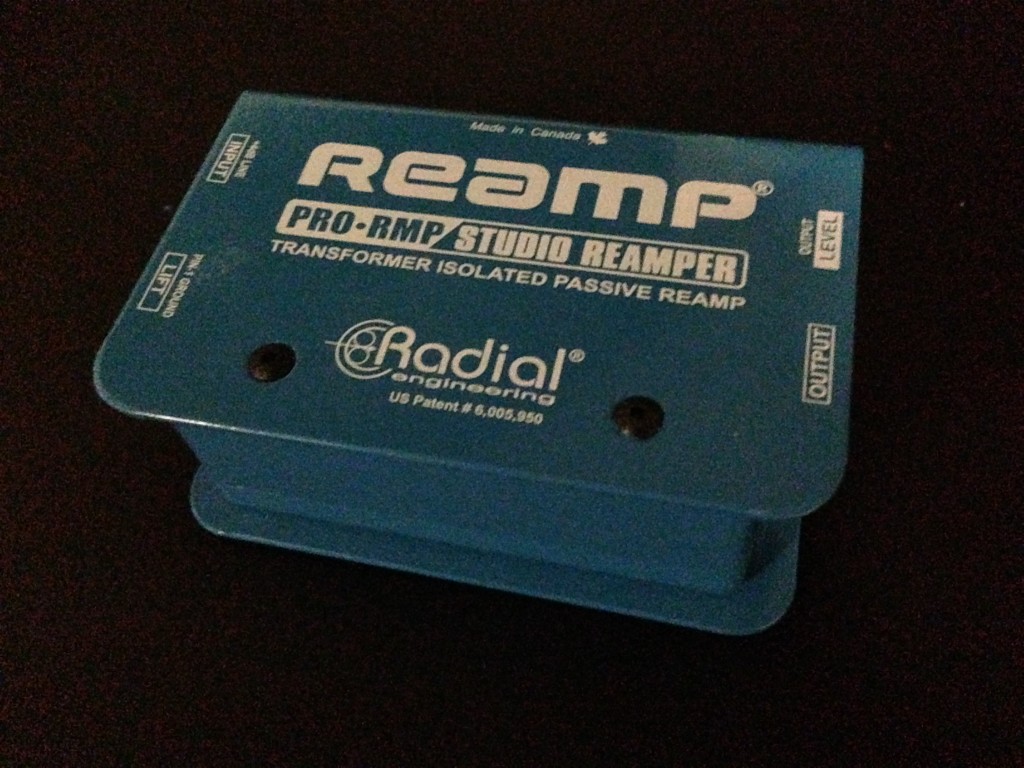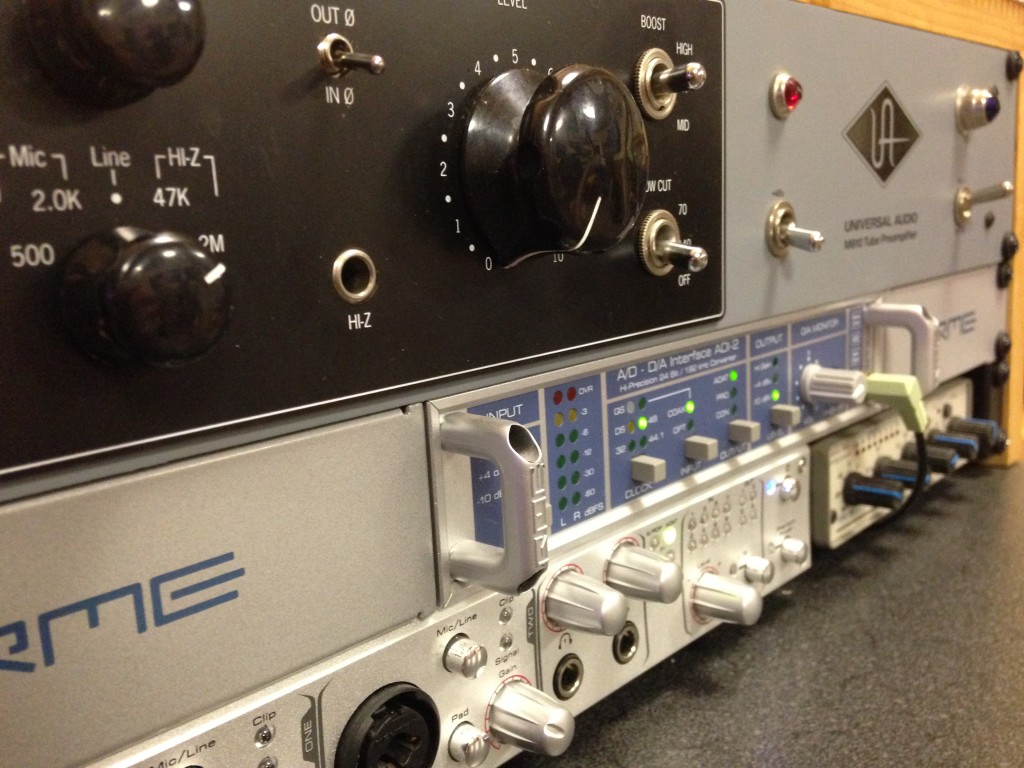[headline style=”17″ align=”center” headline_tag=”h2″]
In The Studio With Shots
[/headline]
Welcome to the never-ending discussion about guitar sounds and how they were recorded. I am not going to attempt to explain to you how to find the perfect tone or mic placement. There are plenty of places to find that information. Instead, I would just like to share with you how we recorded guitars for the Shots In Order Debut Album.
[headline style=”1″ align=”center” headline_tag=”h2″]THE PROCESS FOR RECORDING GUITARS[/headline]
The first thing we decided on was the actual process. Being a fan of the organic sound, we knew we wanted to have the sound of real amplifiers, so using guitar plugins was out of the question. Since we were under time and noise restrictions, we decided that we would first record direct to capture the clean signal, however loading up the SansAmp plugin to dial in an overdrive sound for performance purposes only. By capturing the clean signal and bypassing the SansAmp plugin, I was able to record at a later date and time when there was no restrictions.
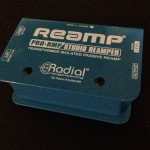 To achieve this, we would have to take the output of the clean guitar track and run it through a Re-Amp Box and then to the amplifier’s input. We used the Radial Reamp box which we purchased for $99. Once this signal chain is set up, you can then dial in your amplifiers controls and move onto your initial mic placement. Set up a new track to record the guitar playing now coming out of the amp! The new track will record whats coming from the microphone. Make sure your inputs and outputs are set up properly, and your ready to start tracking. Start by playing for a few seconds, listen back, and adjust the microphone to taste!!! Repeat the process until you have achieved the desired results.
To achieve this, we would have to take the output of the clean guitar track and run it through a Re-Amp Box and then to the amplifier’s input. We used the Radial Reamp box which we purchased for $99. Once this signal chain is set up, you can then dial in your amplifiers controls and move onto your initial mic placement. Set up a new track to record the guitar playing now coming out of the amp! The new track will record whats coming from the microphone. Make sure your inputs and outputs are set up properly, and your ready to start tracking. Start by playing for a few seconds, listen back, and adjust the microphone to taste!!! Repeat the process until you have achieved the desired results.
[headline style=”1″ align=”center” headline_tag=”h2″]THE SIGNAL CHAIN[/headline]
Now for you gear heads, onto the juicy details. We used the Shure SM57 microphone about an inch away from a Marshall cabinet, positioned on the left edge of the speaker cone and pointed just a hair off axis towards the edge of the cone. Take a look at the example here. Just in case you didn’t know, the Shure SM57 is the industry standard microphone used to mic up electric guitar amplifiers, not to be confused with what really sounds the best. We ran the sm57 into a Universal Audio m610 microphone preamp, then out of the preamp and into The RME ADI-2 analog to digital converter. The ad/da converter then went through the adat optical connection to our audio interface units adat optical inputs. Currently, we have an older M-Audio FireWire 1814 audio interface which sold for about $500 at the time. Not a big fan of it, but it is versatile with different connection types and got the job done. The final piece of the puzzle was Pro Tools as the DAW of choice.[headline style=”1″ align=”center” headline_tag=”h2″]AHH…THE QUEST FOR PERFECT TONE[/headline]
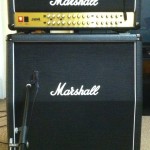 The tone of the rhythm guitar sound on The Shots In Order Album comes from a Marshall JVM 410H Head and Marshall Cabinet. This thing is a BEAST!!! It can basically do anything, from nice cleans to the 800’s, 900’s, modern, and extreme!!! Highly recommended!!! To be honest, I wish I could remember the exact guitar used, but I can definitely narrow it down to a Gibson. As for the lead guitar sounds, here is where you could more likely get away with guitar plugins. We used the Sansamp plugin that comes bundled with Pro Tools, and a higher end Epiphone LEs Paul Prophecy loaded with EMG 81 and 85 active pickups. Love the guitar, but it weighs a ton.
The tone of the rhythm guitar sound on The Shots In Order Album comes from a Marshall JVM 410H Head and Marshall Cabinet. This thing is a BEAST!!! It can basically do anything, from nice cleans to the 800’s, 900’s, modern, and extreme!!! Highly recommended!!! To be honest, I wish I could remember the exact guitar used, but I can definitely narrow it down to a Gibson. As for the lead guitar sounds, here is where you could more likely get away with guitar plugins. We used the Sansamp plugin that comes bundled with Pro Tools, and a higher end Epiphone LEs Paul Prophecy loaded with EMG 81 and 85 active pickups. Love the guitar, but it weighs a ton.
So thanks for reading and we hope you found this interesting. Please let us know how you record guitars and what you are using. Drop us some questions or comments below.
